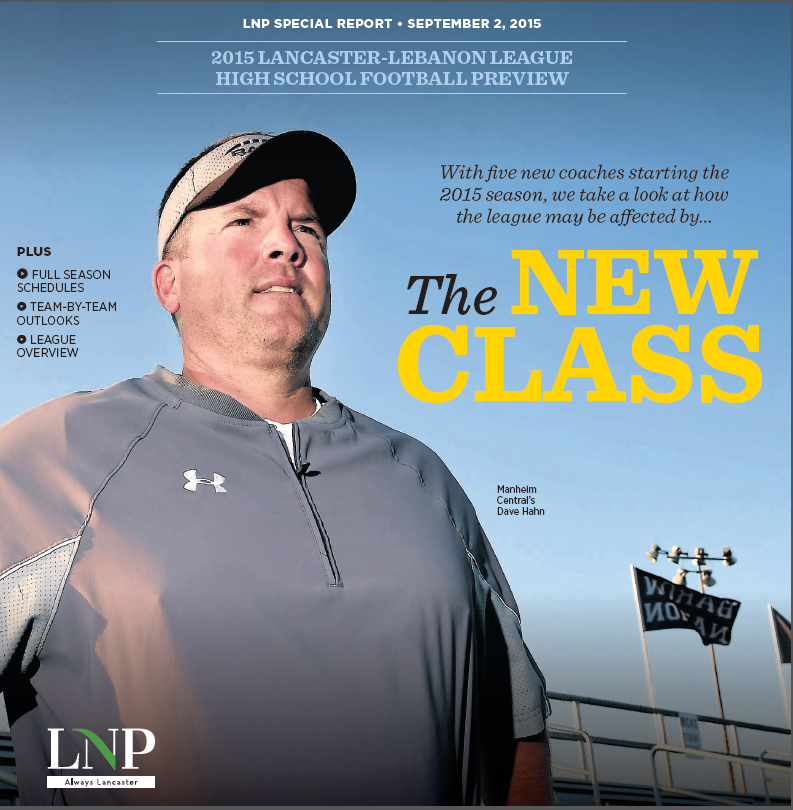Sometimes digital vocabulary and talking technology with vendors and agencies can be intimidating. Even among experts, terms can have slightly different meanings.
We use this digital dictionary at LNP Media Group to make sure all our teams and partners are using the same terminology. We’ve found it also helps our customers and clients better understand our reports and discussions.
Above The Fold
– Refers to the content on a web page that is visible before the user needs to scroll further down. Testing has shown that the most important or valuable information should be displayed Above The Fold.
Ad Groups
– A cluster of closely related keywords and the one or more ads that will be displayed when the keywords are searched.
Google Ads
– Google’s online advertising service where advertised links are placed in the result page of a search engine inquiry. A typical ad appears as a “sponsored link” above, below or in the right or left margin in the result pages from a Google search. The order of the advertisements is based on many things including the amount the advertiser pays, the ad content, relevancy and how often the ad is clicked on.
Alexa Rank
– An algorithm from internet traffic resource Alexa that ranks websites based on a sampling of traffic from reach and page views data.
Algorithm
– A series of variables that a search engine assesses to determine the order of the results offered to users when submitting a search inquiry. The aim of the algorithm is to offer high quality and relevant results to the user based on their inquiry. These variables are all weighted differently, and Google and other search engines continually refine their algorithms with regular updates. Major updates to Google’s search algorithm have been frequent, with the major updates explained briefly below.
Google Caffeine – Released in 2010, Google Caffeine launched a faster web indexing system that returned links to timely and recently published content, and boosted the raw speed of Google’s operation.
Google Panda – Released in 2011, Panda cracked down on thin, poor quality content and sites that were previously ranking highly but had a number of quality issues.
Google Penguin – Released in 2012, which addressed a number of spam factors, most importantly sites that were over optimized with obvious keyword stuffing along with sites that included a number of bad, spammy links.
Google Hummingbird – Released in 2013, Google’s trend to improve the relevance of the search results for its users continued with more of a focus on returning results that specifically answered questions entered into the search field.
Google Pigeon – Released in 2014, this signal ranking change to Google’s algorithm was intended to provide better accuracy and relevancy in local search results.
Google Mobile-Friendly – Released in 2015, dubbed Mobilegeddon, Google added mobile-friendliness as a ranking factor for mobile search results, potentially decreasing the rankings of non-mobile friendly webpages.
Analytics
– A Google service that tracks numerous statistics on a website, including the number of visitors, the level of engagement on the site and other metrics including performance and sales.
Android
– An operating system designed primarily for tablets and mobile devices. It is owned by Google and the world’s most widely used smartphone operating platform.
Backlinks
– Also known as inbound links, backlinks refer users from one website to another. Useful for navigation around the web, but also for SEO, the amount and quality of backlinks are some of the most important measurements to determine to relevance, importance and popularity of a website.
Banner Ads
– Visual advertisements displayed on a web page and delivered through an ad server (used for LancasterOnline) with the aim to drive traffic and entice the user to click through to an advertiser’s website.
Black Hat SEO
– The use of aggressive optimization tactics and strategies that focus on bending the rules and policies of search engines. While Black Hat SEO may increase rankings short-term, it does not necessarily provide true value to the audiences. (See White Hat SEO)
Blog
– A dedicated website or a section of a website where a feed of regularly updated content (usually text) is placed to communicate information, ideas or opinions, usually within a specified niche.
Bounce Rate
– Measured in percentages, the bounce rate is the proportion of visitors to leave or ‘bounce off’ the site. Bounce rates are an indicator used to determine if a site is meeting users’ expectations for quality and content. Low bounce rates are preferred.
Call To Action
– A direct appeal to the visitor of the website to take an action of some kind and convert a visit into a sale, email subscription, contact form or even something as simple as leaving a comment. Often referred to as a CTA.
CLV
– Stands for “Customer Lifetime Value” and refers to the predicted monetary value over the entire relationship with the customer. It can be also based on the expected future cash flow contributed by the customer.
Content Marketing
– A technique where businesses create, distribute and share relevant materials, such as text, reports, blogs, videos or e-books, in a bid to attract, engage and retain customers. Content is offered to the customer as a way to build trust and credibility, with the hope that the customer will reward the business with their business and loyalty.
Conversion Optimization
– A number of techniques used to increase the rate that visitors transition into customers on any given webpage. Techniques include developing persuasive call-to-actions such as free content, e-books or subscriptions to newsletters.
Conversion Tracking
– A type of code, usually offered free by online providers like Google and Twitter, that shows you what happens after a prospect clicks on your ads — whether they purchased your products, signed up for your newsletter or filled out a form to receive more information.
CPC
– The amount an advertiser pays Google or another platform (i.e. Facebook, Bing) when an advertisement is clicked on. The amount is determined through a number of factors such as bidding, relevance, and competition.
CPI
– Stands for “Cost Per Inquiry,” and represents the proportion of inquiries generated from the amount spent on marketing and advertising. It’s an effective tool for assessing the effectiveness of a campaign.
CPM
– An acronym for Cost Per Thousand. Many online ads are priced on a CPM basis, in which the cost is calculated for 1,000 impressions. For example, if an ad is place with a cost of $10 CPM, then it costs $10 to deliver 1,000 impressions.
CSS
– An acronym for “Cascading Style Sheets,” which is a style sheet language used for to identify and instruct the web servers on the look and formatting of a document written in a markup language; for example, fonts and colors of a webpage.
CTR
– Usually measured in a percentage, the CTR, or Click Through Rate, is the amount of visitors who click through to a website from a link, typically on a paid ad or an email newsletter.
Custom Audience
– A custom audience is a list of emails or phone number uploaded into a platform such as Google or Facebook. Once uploaded, you may choose to have your ads delivered to that group, or exclude them from your targeting efforts.
Database Managment
– Database management refers to the actions a business takes to manipulate and control data to meet necessary conditions throughout the entire data lifecycle. The creation and/or coordination of digital information is usually closely connected to sales information.
Directories
– Online directories are websites that specialize in offering collections of links to other websites, sorted by categories and subcategories. Owners of websites can either submit to their domain to a directory to be approved, or the administrator of the directory will add sites.
Domain Authority
– Refers to the reputation of a website as designated by the quality and quantity of content, inbound links, and social mentions; aka trust level.
Domain Consistency
– Also called canonicalization, this consistency involves choosing one URL structure and redirecting all other possibilities to the chosen format in order to avoid duplicate content. A prime example is whether a website address uses the www or not. You can access a site either way, and unless one version is redirected, it is viewed as two identical pages in the eyes of the search engines.
Domain Name
– A domain name is the part of a web address between “www’ and “.com” that uniquely identifies the site. For example, facebook.com is the domain name for Facebook.
Email Marketing
– A direct marketing technique in which a commercial message is sent via email to a group of people in a company’s database of email addresses, usually with the intention for the recipient to purchase something, or to drive traffic to the website. Recipients must opt-in to receive email marketing.
Facebook
– On of the largest social networks. Launched in 2004 for consumers, businesses and brands also use Facebook to engage with their customers.
Facebook App
– Web applications that are loaded into the context of your Facebook page. Facebook apps enable users to complete a wide ranges of functions and tasks while in Facebook.
Facebook Business Page
– Facebook pages designed for businesses, organizations and celebrities, and are required as a condition for Facebook advertising. Unlike personal Facebook pages, business pages have no limit on the number of followers allowed. However, unlike personal pages, business pages can’t follow others or tag individuals in photos. If you are a business operating personal page as your company page, Facebook reserves the right to shut your page down without warning or recourse.
Follow Links
– Inbound links that connect one website to another. They are considered by search engines as a vote or endorsement of that webpage, and the more follow links, the more likely that page will rank highly in search engine results pages. “No follow links” are links that, while still directing users to another website, do not count as an endorsement of the page and do not carry as much SEO benefit.
Geo Targeting
– A method of determining location through post code, IP, country, city or state of the web user, and providing tailored content based on this location (usually an advertisement).
Google Display Network (GDN)
– A network of websites partnered with Google’s Ads interface to display text or image ads to site visitors. Allows users to apply contexual, demographic and geographic targeting. Ad payment options are either cost-per-click (CPC) or cost-per-thousand (CPM).
Google Trends
– A tool which allows you to see what others are searching for within Google. Graphing can be achieved if a time period is selected and can be filtered by geographic region and many other variables to assess the popularity of different terms and phrases. Useful in content marketing to see what people are interested in, in order to tailor content based on that interest.
Google Plus or Google+
– Google’s social network, similar to Facebook in how users each interact with each other, but having the distinction of authorship which attributes content directly with its owner and through other online sites like Gmail and YouTube. Google authorship has been deactivated and Google has officially removed all requirements for Google+ account creation, changing it from a social network to more of a content sharing set of tools.
Goal Completions
– A measure as defined by you, within website analytics, to track how well a website fulfills its conversion objectives. Each time a goal is completed i.e. a visit to the contact page, or the submission of an online inquiry, a completion is logged.
Guest Blogging
– Posting an article on a blog which is not one’s own, usually to increase the profile of the author or in exchange for a backlink to their own website to help with search engine rankings. This tactic has been abused for ranking gains, so Google now looks at these links with a wary eye. Though it still can be an effective SEO tactic, do so with only the user in mind and do so at a natural pace on relevant blogs.
Hacking
– Gaining unauthorized access to an account via phishing, password guessing or session stealing. Usually this is followed by unauthorized posts and unauthorized activities. Hacked accounts are also referred to as “compromised.”
Hashtag
– Any word or phrase immediately preceded by the # symbol. Used mostly as a search signal for posts on Twitter, Facebook, LinkedIn and others, but can be used in jest, for example #digitalmarketingrulz.
Heat Mapping
– A technique to visually assess which areas of the website visitors are paying attention to via a graphic representation of temperature. Used to determine which areas of a webpage people are interested in, and which areas could be improved to boost engagement and the user experience as a whole.
Hyperlink
– A clickable link that diverts to another document or webpage. Most often underlined blue text as a word or phrase, but could also be a picture.
Iframes
– An IFrame (Inline Frame) is an HTML document embedded inside another HTML document on a website. The IFrame HTML element is often used to insert content from another source, such as educational information from a collegiate or encyclopedic website. Content in an iframe cannot be seen by search engine spiders since the content does exist on the non-source website, which hurts the potential SEO value.
Impressions
– The number of times an ad or sponsored post is displayed online, whether it has been clicked on or not.
Inbound Marketing
– Targeted, narrow topic delivered as digital content designed to motivate qualified prospects to opt-in to your sales funnel. Blogs, podcasts, video, Ebooks, newsletters and whitepapers are commonly used as content to attract prospects. Inbound marketing has also been called “link baiting” in reference to creating resource and/or entertaining content in hopes of earning social shares and inbound links.
Indexible Navigation
– A website’s navigation that is both visible and functional to visitors and web crawlers even when the site is viewed without javascript and/or CSS enabled. Web crawlers view websites without site enhancements such as javascript. this is important for SEO to make sure spiders can crawl the entire website.
Instagram
– A social networking application and website where users submit pictures and short video which can be edited and enhanced for their followers to engage with. A medium that is becoming increasingly used among brands that offer products or services with a strong visual appeal.
Javascript
– A web script language which enables web developers to create a websites with an array of interactive features.
Keywords
– The terms or phrases that search engine users submit when making searches. These words holds a great significance to web marketers trying to reach users and shoppers when they are in the moment of need/interest.
Keyword Planner
– A tool developed by Google which shows search volumes of different keywords, suggests similar keyword ideas and shows search volumes and estimates by city and country. Keyword planner is a very useful function to develop a search campaign and for clues to SEO strategy.
Keyword Rich Domains
– Websites that feature keywords in the web address, for example lancastercarpetcleaners.com, instead of the actual name of the business. In the past purchasing these domains have been effective in ranking highly in search engines, but as algorithms become more sophisticated, keyword rich domain names are starting to only rank highly on their merits instead of simply because relevant keywords are used. Similarly, EMDs, or Exact Match Domains, are domains with names that exactly match search queries such as insurance.com or gardening.net.
Landing Page
– A specific page where traffic is directed to, either from a search engine or another type of online referral.
Lead Generation
– Obtaining predefined sets of data from potential customers, through marketing and advertising efforts and then delivering that information to designated sales and marketing teams.
Likes, Shares, Comments
– These are a measure of engagement within Facebook. The more likes, shares and comments the more engagement with that post or update, and the more exposure and reach the post will have to other Facebook users.
LinkedIn
– A social media platform used by people for business networking. LinkedIn is also used as a digital recruitment and marketing tool for companies to attract new staff, and as a hub for people to find jobs and recommend roles to others in their networks.
Lookalike Audience
– Lookalike audiences are a way to reach new people who are likely to be interested in your business because they’re similar to customers you care about. Based on the list of contacts you provide, a Lookalike Audience list is created that contains contacts that are similar in social activity, website registration, online purchases, coupon claims and brand awareness.
Messaging
– A marketing term to describing content rooted in a defined brand position or a specific marketing strategy.
Metadata
– Can be a number of pieces of information (or data) including the size of the image, when the image was created, descriptions and keywords to help describe the content of a webpage with the aim of assisting in the categorization and indexing of the information.
Mobile-Friendly
– Used to describe websites that display correctly on hand-held devices such as smartphones, iPhones, iPads, and tablets, whether through responsive design or mobile dedicated pages such as Google AMP pages.
Mobile-Optimized
– A website programmed to significantly reformat on hand-held devices, such as smartphones and tablets, in order to provide an premium user experience across devices.
Moz Domain Authority Rank
– An algorithm created by a leading SEO service provider that calculates a website’s SEO performance with a scoring system on a scale of 100, where 100 is perfect. This score is called Domain Authority.
Native Advertising
– Online advertising that matches the form and function of the platform on which it appears. Like advertorials, it blends in with the non-advertising content. Facebook ads that appear as a sponsored post within the feed are a form of native advertising. This can also be called sponsored content.
Onsite Optimization
– Techniques used to help a website perform well in search engines including url structure, page headings, keyword placement and density, meta tags and descriptions, etc. Onsite optimization helps a website with its visibility and readability to search engine spiders.
Offsite Optimization
– The techniques which help a website to rank well which take place off the page or site. This is most often achieved by building external links, guest blogging and social sharing of content.
Organic Traffic
– Unpaid, unsponsored and/or unsolicited traffic to a website, typically from search engine results pages (SERPs).
Outreach
– Similar to PR activities, outreach can refer to a number of techniques and activities a business can undertake to develop relationships between people in their industry with the aim to boost the exposure of their brand.
Page Rank
– An algorithm developed by Google’s founder, Larry Page, which determines the importance of websites based on the number and the quality of links the site has from other sites. The importance of this rank (a scale of 1 to 10 where 10 is best) has now been significantly reduced and officially denounced by Google and the SEO industry.
Page Views
– Used to describe an instance where a page is loaded by a web browser. Each time that page is refreshed or revisited, another page view is logged, even from the same user in the same session.
Paid Search
– Advertising within the sponsored listings of a search engine or a partner site by paying either each time your ad is clicked (pay per click or PPC) or when your ad is displayed (cost per thousand impression or CPM).
Pay Per Click (PPC)
– Another name for paid search advertising that is not cost-per-impression.
Permission Marketing
– Users give marketers “permission” by voluntarily opting in to receive information, product news and other company news. Permission marketing usually produces a higher level of engagement over marketing which interrupts or bombards the user. Email newsletter subscriptions and following a business on social media are forms of permission marketing.
Pinterest
– An image-based social network in which users collect or ‘pin’ images of interest from around the web to themed or categorized boards. When an image is pinned to a board from an external site.
Profile
– The personal or business information provided as identification for social media accounts such as Twitter or Facebook. Basic profile information usually appears on your social media page and sometimes also with content listings or previews.
Reach
– The number of people who are exposed to a message, post or advertisement at least once. Reach numbers refer to unique people reached. Often compared against impressions, which can contain multiple views for each person.
Reciprocal Link
– A link that has been arranged between two websites that link to each other, usually in hopes of improve the SEO status of both website. This tactic has been abused in the past is no longer as effective and could even lead to ranking penalties is excessive and unnatural.
Reddit
– A social website with forums or ‘threads’ where users join in conversations on an almost unlimited amount of topics. These topics are categorized into subreddits. The relevance, quality or validity of the comments submitted under a topic heading are then voted up or down to endorse or pan which determines their ranking or position on the page.
Refferal Traffic
– Traffic to a webpage which comes from a link on another website.
Remarketing
– Sometimes referred to as retargeting, it’s the process of sending advertising only to people who have visited your website. Includes sending ads to visitors who have abandoned shopping carts. Remarketing ads can be in the form of images on other websites or text ads in the search results.
Retargeting
– See REMARKETING.
Robots
– Also known as Internet bots, web crawlers or spiders. This software application browses through the World Wide Web to index and categorize. Once web content has been crawled and indexed, it can then be found on search engine results pages (SERPs).
ROAS
– Refers to “Return On Ad Spend’ and is a measure to determine the financial gain from advertising expenditures, similar to ROI, but specific to paid ads.
Robots.txt
– An online file in simple TXT format that instructs web crawlers (or spiders) on how the web master wishes the site be crawled. It is typically used to list files or directories that are “allowed” and “disallowed” to be seen, in order to stop the spiders from indexing sensitive or irrelevant information for display in the search engine results.
ROI
– Refers to “Return On Investment’ and is a measure to determine the financial returns made from running a digital marketing campaign, ad campaign or other form of paid venture.
Spam
– Advertising messages (usually emails) that are delivered in bulk that may be unwelcome, unsolicited, or overly frequent and usually not material which the recipient has opted to receive, or lacks relevance.
SEM
– Search Engine Marketing refers to a range of paid online activities that increase the visibility of a website. These activities include pay per click, advertising, display advertising, retargeting, and others. SEM can also refer to Search Engine Marketers–the person performing these tasks.
SEO
– Search Engine Optimization is a critical element in ensuring a website is found online, making it especially important for a business looking to gain new customers. It involves many optimization strategies and web development standards including proper web structure, onpage metatag optimization, hyperlink optimization and offsite link building. SEO can also refer to Search Engine Optimizer–the person performing these tasks.
SERP
– Search Engine Results Page is the collection of web results offered by a search engine after submitting an inquiry.
Social Bookmarking
– A method for internet users to save share-links to pages or sites that they like with others online and add comments and other tags. Stumble-upon and Reddit are examples of social bookmarking sites.
Social Media
– A term used to describe a variety of online platforms and technologies that enable people to socially interact with one another across the internet using words, pictures, emoticons or video. Facebook, LinkedIn, Pinterest and Snapchat are just a few examples.
Traffic
– The number of visits a website has in any given period.
Twitter
– A micro-blogging social media platform in which users interact with each other and their networks by “Tweeting”, or submitting, short comments (280 characters or less) on specific topics or conversations, or tweet updates to their following.
Unique Visitors
– A visit to a website which is only counted once per visitor in a given period, regardless of the number of times they return to the site.
URL
– Stands for “Uniform Resource Locator” and is used to specify addresses on the web. Example URLs are: https://lancasteronline.com/ and https://lnpmediagroup.com/.
UTM Code
– An additional string of code attached to a URL in order to more precisely track the source, medium, and campaign of traffic.
Vlog
– Instead of written content on a blog, these posts and updates are in video form, often supplemented with a text paragraph to introduce and describe the contents of the video.
Web Crawler/ Web Spider
– See ROBOTS.
White Hat SEO
– The optimization tactics and strategies that focus on improving the user experience and providing value to audiences while still following best practices, rules and regulations outlined by search engines. (Opposite, See Black Hat SEO)
WordPress
– A popular content management system (CMS) that publishes new content to a website, or blog with a number of different features, plug-ins and other functionality which makes it considered the best for usability, spam protection and web standards.
XML Site Map
– An online file in XML format that lists a website’s pages for search engine crawlers to visit and index.
YouTube
– The world’s largest video sharing site, also a valuable place for companies and individuals to develop a hub of valuable and useful content to help build their profile and direct traffic back to their website. YouTube is also one of the largest search engines.
Want help implementing some of these tactics into your marketing mix? Want more leads, but don’t know where to start? Contact us and we’ll put our marketing team to work on a customized plan to grow your business.









